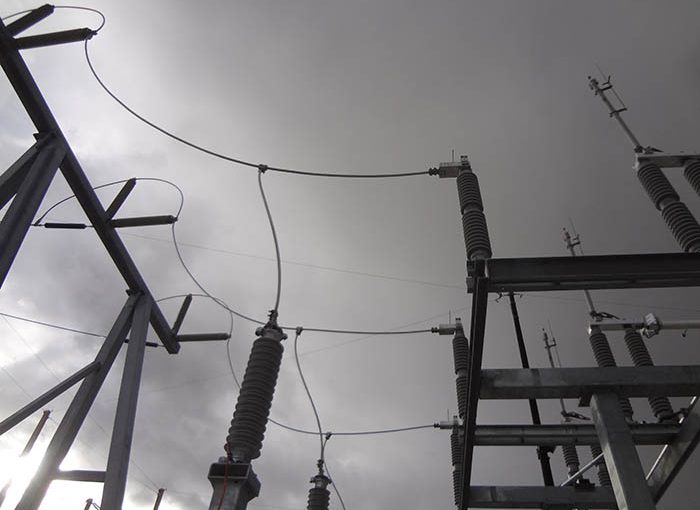Lightning arresters

WHAT IS IT? OPPD installs lightning arresters at substations and on overhead distribution lines to provide a path to ground for over-voltages caused by lightning and other power surges to protect equipment and help prevent outages.
Within a substation, OPPD uses arresters to protect equipment against voltage surges resulting from lightning strikes, switching surges and system faults.
Substations also have shield wires and/or lightning masts to help reduce the risk of damage from direct lightning strikes.
During a high-voltage surge, the arrester acts as a conductor, allowing surge energy to flow to ground. That keeps the substation equipment within design limits and protects the equipment from damage. When voltage returns to normal, the arrester stops conducting.
In general, utilities install arresters at each incoming or outgoing transmission and distribution line. They also install them within a substation and at each transformer.
 On distribution lines, OPPD places surge arresters on overhead transformers, poles where conductors transition from overhead to underground, and lines where the neutral is installed below the primary wires for an extended distance. In the last instance, OPPD installs arresters at least every 1,200 feet.
On distribution lines, OPPD places surge arresters on overhead transformers, poles where conductors transition from overhead to underground, and lines where the neutral is installed below the primary wires for an extended distance. In the last instance, OPPD installs arresters at least every 1,200 feet.

Terry Zank is a contributor to The Wire and senior digital channel specialist at OPPD, where he has worked for 30 years. He and his wife have three sons. Terry enjoys bike riding, playing racquetball, hiking, watching college football, watching great movies from years’ past, and citing quotes from those movies, much to his family’s chagrin.
View all posts by Terry Zank >







